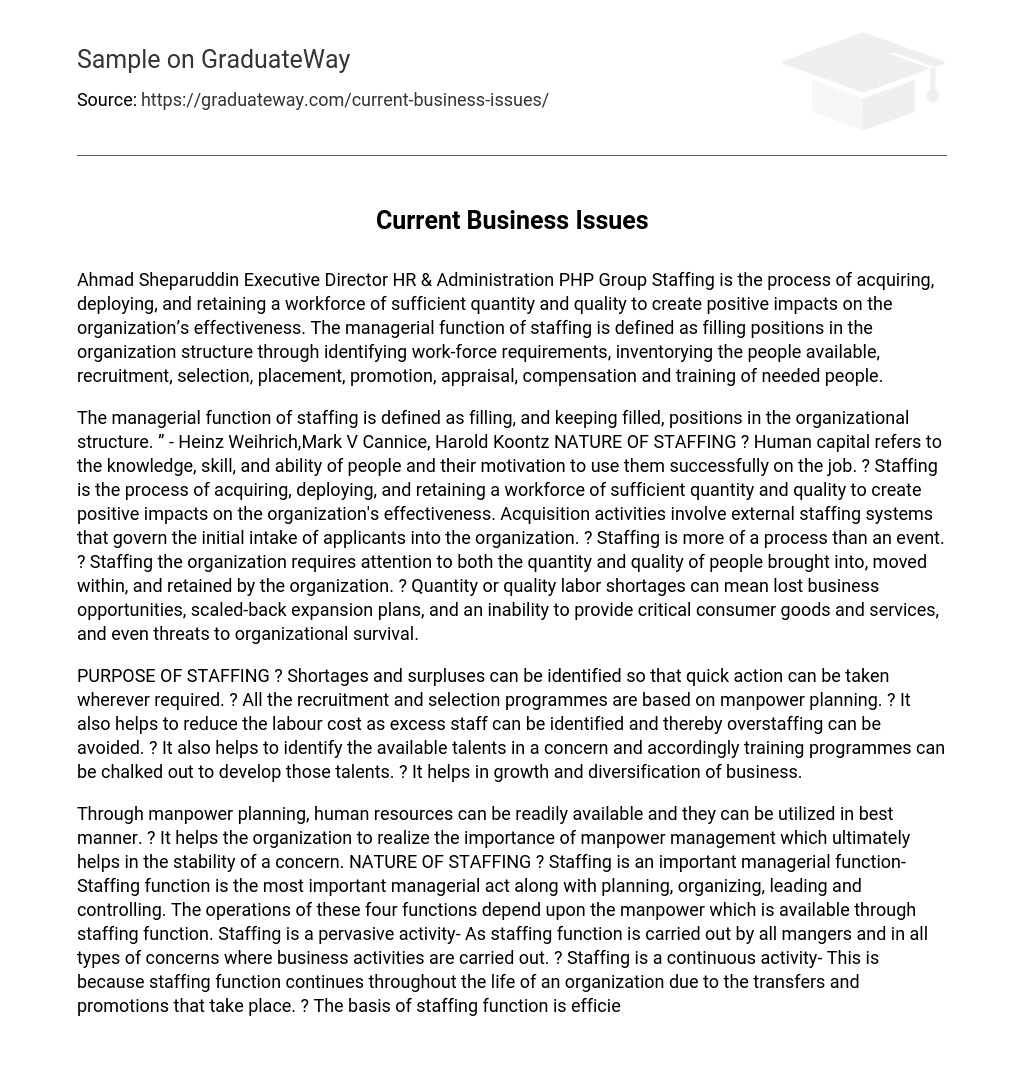Group Staffing is the process of acquiring, deploying, and retaining a workforce that has sufficient quantity and quality to create positive impacts on the organization’s effectiveness. The managerial function of staffing involves filling positions in the organization structure by identifying workforce requirements, inventorying available personnel, recruiting, selecting, placing, promoting, appraising compensation and training needed individuals.
Human capital refers to the knowledge, skills, and abilities of people, as well as their motivation to use them successfully on the job. Staffing is a process that involves acquiring, deploying, and retaining a workforce of sufficient quantity and quality to create positive impacts on an organization’s effectiveness.
Acquisition activities involve external staffing systems that govern the initial intake of applicants into the organization. Staffing is more of a continuous process than a one-time event. It requires attention to both the quantity and quality of people brought into, moved within, and retained by the organization.
A shortage in either quantity or quality labor can result in lost business opportunities, scaled-back expansion plans, an inability to provide critical consumer goods and services, and even threats to organizational survival.
Shortages and surpluses can be identified through manpower planning, allowing for quick action to be taken wherever necessary. Recruitment and selection programs are based on this planning, which helps reduce labor costs by identifying excess staff and avoiding overstaffing. Additionally, available talents within the organization can be identified through manpower planning, allowing for training programs to be developed to further develop those talents. This process also aids in the growth and diversification of business by ensuring that human resources are readily available and utilized in the best possible manner. Ultimately, manpower planning helps organizations recognize the importance of effective management of human resources, leading to greater stability within a company.
The staffing function is one of the most important managerial acts, alongside planning, organizing, leading, and controlling. The success of these four functions depends on the available manpower provided by the staffing function. Staffing is a pervasive activity that all managers carry out in all types of concerns where business activities are carried out.
Staffing is a continuous activity because it continues throughout the life of an organization due to transfers and promotions. The basis of the staffing function is efficient management of personnel. Human resources can be efficiently managed through a system or proper procedure, including recruitment, selection, placement, training and development, and providing remuneration. Staffing helps to place the right people in the right jobs, which can be done effectively through proper recruitment procedures and selecting the most suitable candidate based on job requirements.
Staffing is performed by all managers, depending on the nature of the business, size of the company, and qualifications and skills of the managers. In small companies, this function is generally performed by top management. In medium and small scale enterprises, it is typically handled by the personnel department.





